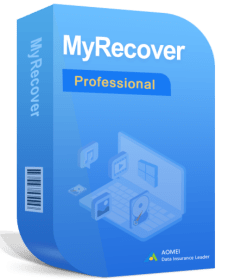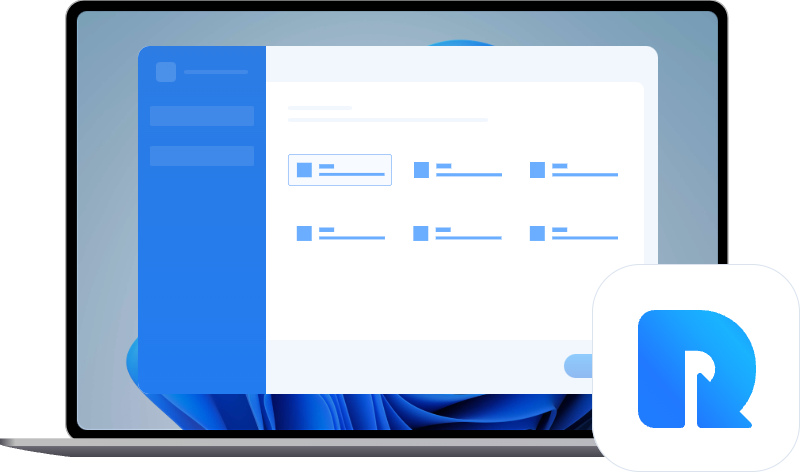4 Fast & Free Ways to Fix File Record Segment Is Unreadable
If you are looking for solutions to fix file record segment is unreadable on Windows 10/11/7? Read this guide to get 4 fast and free methods to fix your hard drive and recover lost data.
Ever stumbled upon a computer error that made your heart skip a beat? If you've encountered the "fix file record segment is unreadable" message, you know exactly what panic feels like. But fear not! This guide is your beacon of hope.
How do I fix file record segment is unreadable on Windows 10/11/7? We'll dive deep into what file record segments are, unwrap the mystery behind their unreadability, and walk you through 4 foolproof methods to fix this issue. Whether you're a tech newbie or a seasoned IT professional, our comprehensive, step-by-step guide promises clarity, simplicity, and above all, solutions.
Part 1: Understanding the Error
What is a File Record Segment?
Let's break it down with an analogy. Imagine your hard drive as a vast library and each file as a book. The File Record Segment (FRS) is the library's catalog card, detailing where each "book" is located. Part of the NTFS (New Technology File System), these segments are critical for your system to retrieve and manage files efficiently.
Why Does the "File Record Segment is Unreadable" Error Occur?
The reasons can range from physical damage to your hard drive, corrupt files, bad sectors, or even software glitches. Like a coffee spill on a library catalog card, if the FRS is damaged, the system can't locate or access the files, leading to errors, data loss, or system instability.
What Happens When a File Record Segment Becomes Unreadable?
When a file record segment becomes unreadable on Windows 11/10/7, it usually indicates a failing drive and poses a serious risk to the data stored on it. Here's what happens:
-
Data Inaccessibility: Windows cannot read or locate the file record in the file system table, making it impossible to access the stored data.
-
Drive Damage: If numerous file record segments become unreadable due to bad sectors, the drive can become damaged and may turn into a RAW/unrecognized state by the Windows PC.
In such cases, immediate action is required to prevent further data loss and potential drive failure.
Part 2: How to Fix File Record Segment is Unreadable
1: Run the CHKDSK Utility
How to fix file record segment is unreadable on Windows 10/11/7 effectively? CHKDSK, the old reliable of disk repair tools. Running this utility is often the first step in troubleshooting the "fix file record segment is unreadable" error. Here's how to do it:
- Enter “cmd” in search bar, open Command Prompt as Administrator, type the appropriate CHKDSK command (e.g., chkdsk /f /r /x), replacing X with the letter of the affected drive.
- Press Enter and let CHKDSK do its magic.
This process can take some time, depending on the size of your drive and the extent of the damage. CHKDSK will attempt to fix any bad sectors and repair file system errors, which could resolve the issue.
2: Use System File Checker (SFC)
The System File Checker (SFC) is another built-in Windows tool that can come in handy. It scans for and repairs corrupt Windows system files, which could be causing the error. Here's how to wield this tool:
- Enter “cmd” in search bar, and open Command Prompt as an administrator.
- Type sfc /scannow and hit Enter.
- Wait patiently as SFC scans your system and fixes any corrupt files.
3: Check for Physical Damage
Sometimes, the problem is just physical damage to your hard drive. So, how to fix file record segment is unreadable on Windows 7,10,11 easily? Here's what you can do:
Connect to Another Computer:
- Plug your hard drive into another working computer.
- If the hard drive shows up as an extra drive in "This PC/My Computer".
Listen for Strange Noises:
- Check if you hear any unusual sounds like clicking or grinding. These sounds often mean physical damage.
If you can't connect the hard drive to another computer or you hear strange noises, consult a professional technician. They can help with data recovery and let you know if you need to replace the drive.
4: Use a Data Recovery Tool (AOMEI FastRecovery)
When all else fails, or as a complementary step, using a data recovery software like AOMEI FastRecovery can be a game-changer. AOMEI FastRecovery specializes in salvaging data from drives facing the fix file record segment is unreadable error, among other issues.

- User-Friendly Interface: Designed for non-techies, making the recovery process a breeze.
- Deep Scan Technology: Digs deep into your drive to recover data other tools might miss.
- Preview Before Recovery: Allows you to preview files before committing to recovery, ensuring you get back exactly what you need.
- Support Various Storage Devices: You can recover deleted files from SD cards, USB drives, internal/external hard drives.
Detailed Recovery Steps with AOMEI FastRecovery:
Step 1. Download, install, and run the software > Hover the mouse over the affected drive and click Scan for scanning.
Step 2. It will run Quick Scan & Deep Scan automatically and find all the recoverable data . You can filter and preview them before recovery.
- Type: Select from different file types like images, videos, documents, emails, web pages, and more.
- Data Modified: Filter by when the file was last changed: today, yesterday, last 7 days, last 30 days, or a custom date range.
- Size: Choose files based on size: less than 128KB, 128KB ~ 1MB, 1MB ~ 512MB, above 512MB, or set a custom size range.
Step 3. Select files you want to recover by clicking Recover X Files and please select a new location to aviod data overwriting.
Conclusion: Safeguarding Your Digital Life
In the digital age, data is gold, and the "file record segment is unreadable" on Windows 10/11/7 error is one of the many dragons guarding the treasure. But with the right tools and knowledge, slaying this dragon is not only possible but relatively straightforward. Remember, regular backups are your best defense against data loss, so always be prepared.
FAQs
1. What does it mean when a file is unreadable?
When your system says a "file record segment is unreadable," it means there's a problem with accessing a specific part of your data. This can happen due to:
- Bad sectors
- Damage to the Master File Table (MFT) or File Allocation Table (FAT)
- Improper drive deletion
- Virus attacks
- Power issues
- Corruption in the partition table
2. How big is a file record segment?
The size of a file record segment depends on the file system and disk size. For the NTFS file system used in Windows, a file record segment typically ranges from 1 KB to 4 KB. This size can vary based on disk utilization and the specific file being stored.
3. Can the "fix file record segment is unreadable" error lead to permanent data loss?
Yes, if not addressed promptly, it can lead to permanent data loss. However, using the methods outlined in this guide, especially data recovery tools like AOMEI FastRecovery, can help recover lost data in many cases.
4. Is running CHKDSK safe? Could it cause further damage to my files?
"File record segment is unreadable" using CHKDSK to fix is generally safe and is a recommended troubleshooting step. However, there's a small risk it could lead to data loss in cases of severe corruption. Always back up your data, if possible, before running CHKDSK.
5. How to repair an SSD with CHKDSK?
CHKDSK will scan your SSD for errors and fix them, addressing issues like unreadable file record segments. Repairing an SSD with CHKDSK is straightforward and similar to recovering corrupted hard drive. Here's how you do it:
- Open Command Prompt as Administrator.
- Type the command: chkdsk /f /r /x.
- Follow the on-screen instructions.
- Restart your system to start the process.
6. How often should I back up my data to avoid the impact of such errors?
It depends on how frequently your data changes. For most users, a weekly backup is sufficient. However, if you deal with critical data that changes daily, consider backing up your data daily.
7. Can physical damage to a hard drive be repaired at home?
DIY repairs on physically damaged hard drives are not recommended, as they can easily lead to further damage. It's best to consult a professional if you suspect physical damage.


